2025 is proving to be a year of shifting habits and evolving priorities. Salons and spas, often seen as places of indulgence and self-care, are now also functioning as early warning systems for broader economic conditions. When customers delay appointments, choose less expensive treatments, or skip visits altogether, it sends a signal that something is changing in the wider consumer landscape.
When you're looking for the latest salon business news, it can be frustrating to note that these shifts do not seem to be isolated or temporary. Across the country, hairstylists, nail technicians, massage therapists, and aestheticians are observing new patterns in how clients spend their time and money.
Early Economic Warning Signs at the Salon
In beauty circles, talk of “longer hair and nails” isn’t just a style statement—it’s an economic indicator. Clients are waiting longer between appointments, pushing out their regular trims, manicures, and facials by weeks. Some are forgoing high-maintenance styles in favor of simpler, more natural looks. This isn’t just about fashion; it’s a cost-saving move that reflects growing caution with discretionary spending.
Industry professionals say the shift is reminiscent of the “recession hair” era of 2009, when the financial crisis prompted a surge in at-home beauty treatments. In cities like Brooklyn, Chicago, and Portland, salon owners report fewer walk-ins, smaller tips, and more resistance to add-on services. Even loyal, long-term clients are adjusting their habits.
And it’s not only middle- and lower-income households feeling the pinch. Affluent clients—traditionally seen as recession-proof—are showing signs of restraint, whether by spacing out appointments or choosing more understated services.
Insights from the 2025 Salon Floor
The 2025 New York International Beauty Show and International Esthetics, Cosmetics & Spa Conference drew more than 32,000 professionals. While the event was upbeat and attendance was up from the previous year, conversations among stylists revealed a more sobering reality.
Hairdressers from Maine to California reported similar stories: clients requesting “low-maintenance” cuts, switching from color services to natural growth, and even attempting DIY hair coloring at home. Some admitted they only return to the salon after a home attempt goes wrong, ironically generating corrective work for stylists, but not the steady, predictable business that sustains a salon.
Massage therapists and aestheticians also see a slowdown. One spa owner said she’s been “eliminated from some clients’ budgets entirely,” a clear sign that personal care is being deprioritized in household spending.
Rising Costs and Industry Supply Pressures
While demand is fluctuating, the cost of running a salon is increasing. Global supply chain challenges, compounded by tariff hikes—some as high as 145% on imported beauty products and packaging—are pushing up expenses. Oils, lotions, creams, and specialty packaging sourced from China are staples in the industry, and alternative sourcing can be expensive or impractical.
Some suppliers have chosen to absorb these costs rather than pass them on to salons, but this isn’t a sustainable solution for everyone. Others are stockpiling inventory to lock in lower prices. The result is added financial pressure on an industry already navigating reduced client frequency and growing price sensitivity.
High-end salons may have more flexibility to raise prices without losing customers, but budget-friendly and mid-tier salons are in a tougher position. Even modest price increases can prompt clients to shop around or turn to at-home solutions.
Key Consumer Behavior Shifts in 2025
Several clear patterns are emerging that reflect broader changes in consumer priorities. Each one carries implications for how salons and spas adapt their offerings.
Extended Service Intervals
One of the most noticeable changes is the lengthening gap between appointments. Clients who once visited every two to three weeks for color touch-ups or nail fills are now stretching to four or five weeks—or more. This shift directly impacts revenue predictability, forcing salons to either expand their client base or find ways to boost the value of each visit.
DIY and Low-Maintenance Trends
Consumers are increasingly willing to handle some aspects of beauty care themselves. At-home nail kits, box dyes, and DIY facials are becoming more popular, especially when marketed as budget-friendly alternatives. Many clients are also embracing hairstyles and treatments designed to require less upkeep, reducing the need for frequent salon visits.
Reduced Tipping and Upsell Resistance
It’s not just the frequency of visits that’s changing—spending patterns during visits are shifting too. Stylists report lower tip percentages and more resistance to add-on treatments or professional products. The upselling opportunities that once supplemented service revenue are less reliable.
Price Sensitivity Across Segments
While premium customers are still willing to pay for high-quality services, the middle of the market is showing signs of strain. Even clients with steady incomes are reconsidering what constitutes a “necessary” expense, leading to skipped appointments and fewer splurges.
Operational Strain from Supply Chain Pressures
The economic conversation in the beauty industry isn’t only about clients—it’s also about costs. Tariffs, inflation, and global sourcing challenges are making certain products more expensive or harder to find. Salons that rely on imported goods are especially vulnerable to price spikes and supply delays.
Strategic Responses for Salon and Spa Operators
For salon and spa owners, these shifts are not just challenges—they’re signals to adapt. The businesses that will thrive in 2025 are those that respond creatively to changing client behaviors.
Adapt Pricing and Service Structures
One strategy is to repackage services in ways that accommodate clients’ new spending habits. Maintenance-only appointments, loyalty discounts, or bundled service packages can help retain clients who might otherwise cut visits entirely.
Promote Budget-Friendly Enhancements
Rather than pushing high-ticket add-ons, focus on affordable upgrades or at-home care options. Selling professional-grade products or offering DIY touch-up kits can keep clients engaged between visits while still generating revenue.
Diversify Product and Service Channels
Expanding beyond the traditional in-salon model can create new income streams. Virtual consultations, online product sales, and subscription-based beauty boxes are ways to meet clients where they are—whether that’s in the salon or at home.
Communicate Value Clearly
When raising prices or introducing new services, transparency matters. Clients are more receptive to changes when they understand the benefits—whether it’s superior product quality, enhanced hygiene standards, or the long-term results of a treatment.
Monitor and Mitigate Supply Risks
Being proactive about sourcing can help reduce the impact of supply chain disruptions. Establishing relationships with multiple vendors, exploring local alternatives, or adjusting service offerings to work with more accessible materials can provide flexibility.
Temporary Shift or Lasting Change?
It’s still unclear whether these trends will reverse if economic conditions improve, or whether they represent a more permanent shift in consumer priorities. Historically, beauty spending has proven resilient—people still seek out treatments that help them look and feel their best, even in lean times. However, the way they access those treatments is evolving.
What’s certain is that the industry is entering a period where flexibility and creativity will be essential. Salons that diversify offerings, strengthen customer relationships, and remain sensitive to changing economic realities will be best positioned to succeed.
The Bottom Line
In 2025, the salon and spa industry finds itself at a crossroads. Client behaviors are shifting—sometimes subtly, sometimes dramatically—in response to economic pressures, lifestyle changes, and evolving expectations. For every challenge, there is an opportunity for innovation.
The beauty industry has weathered downturns before. By paying attention to these early warning signs, adapting service models, and staying connected to client needs, salon owners can not only survive but potentially build a stronger, more resilient business for the future.














